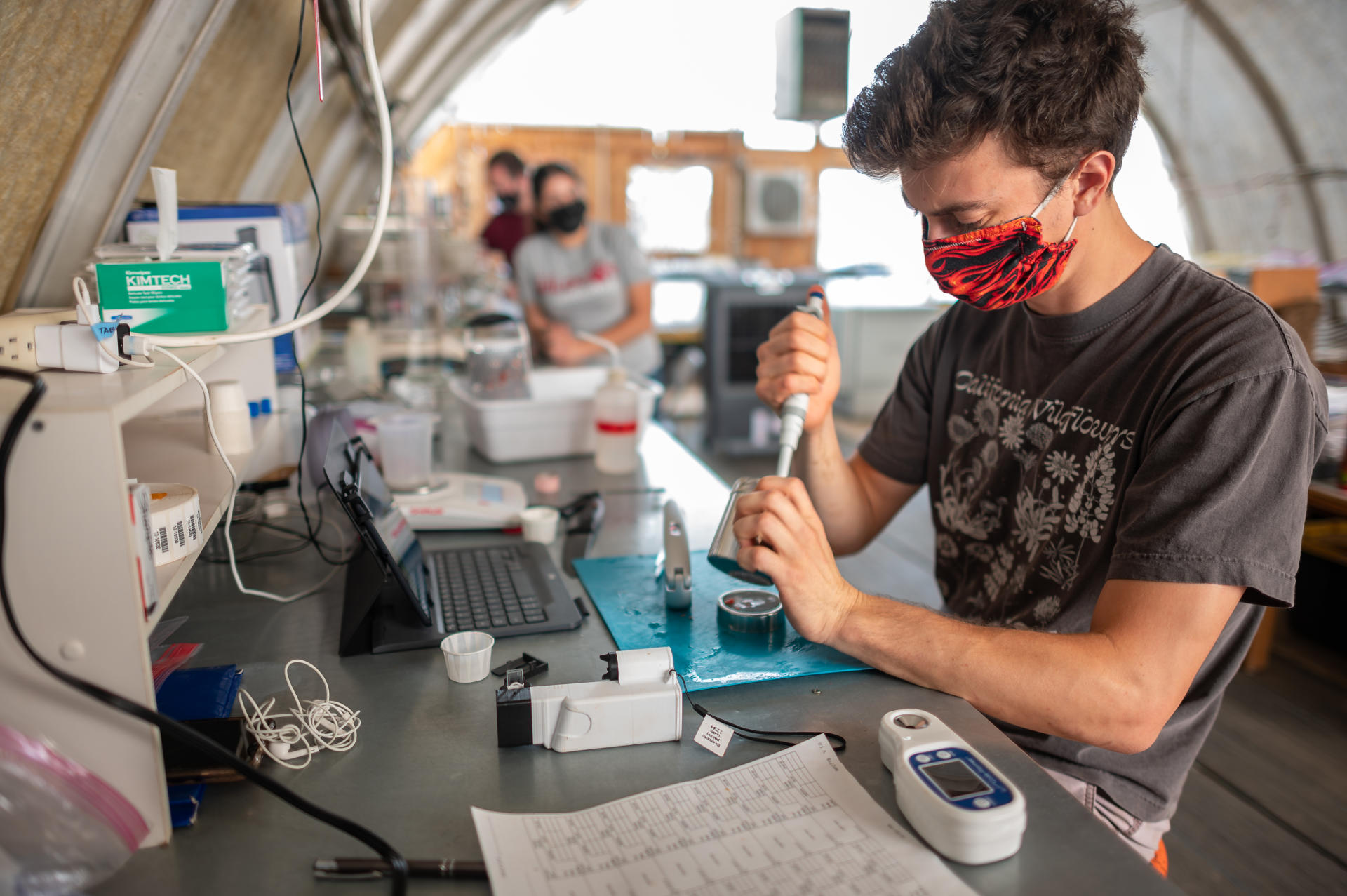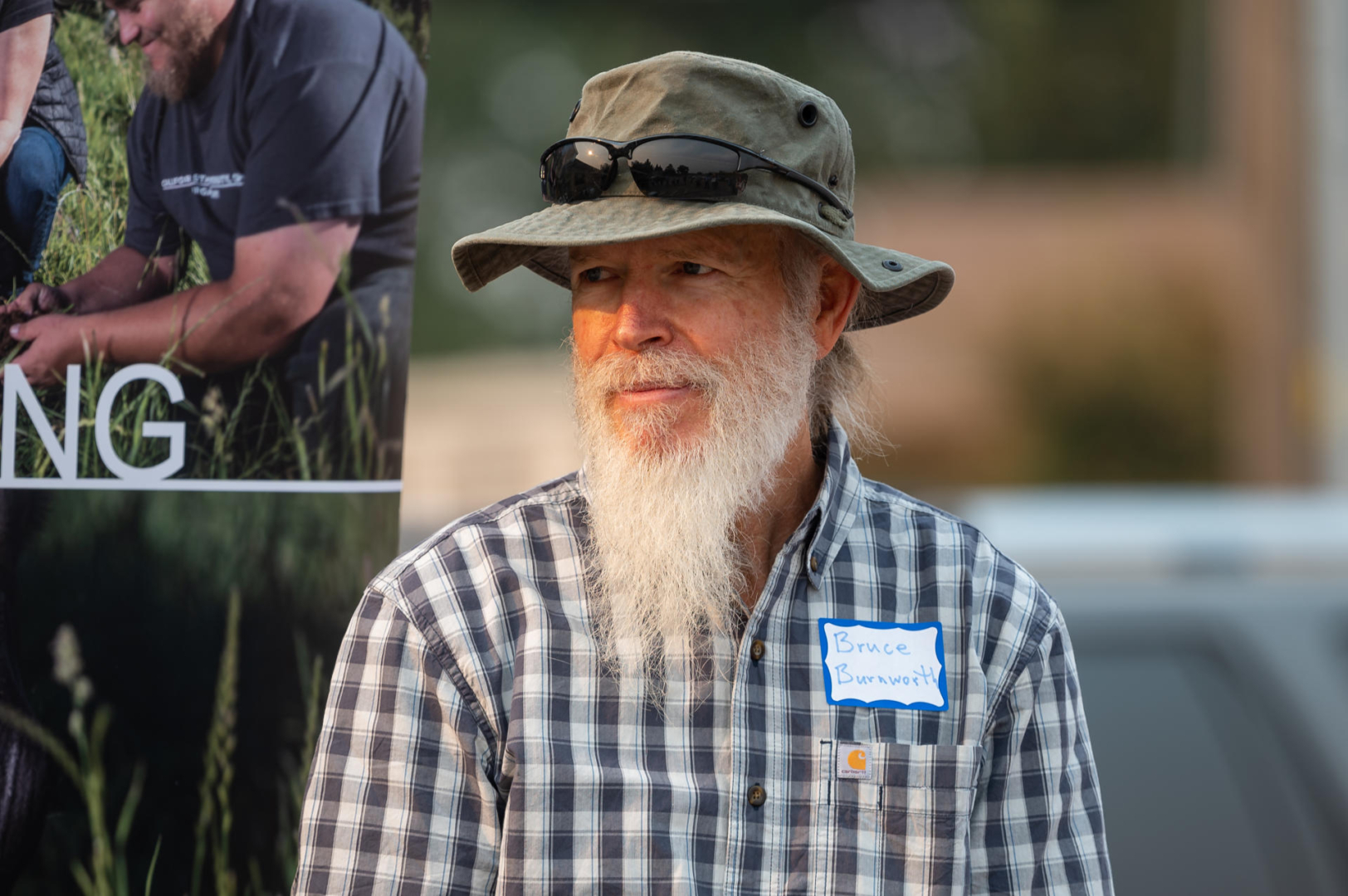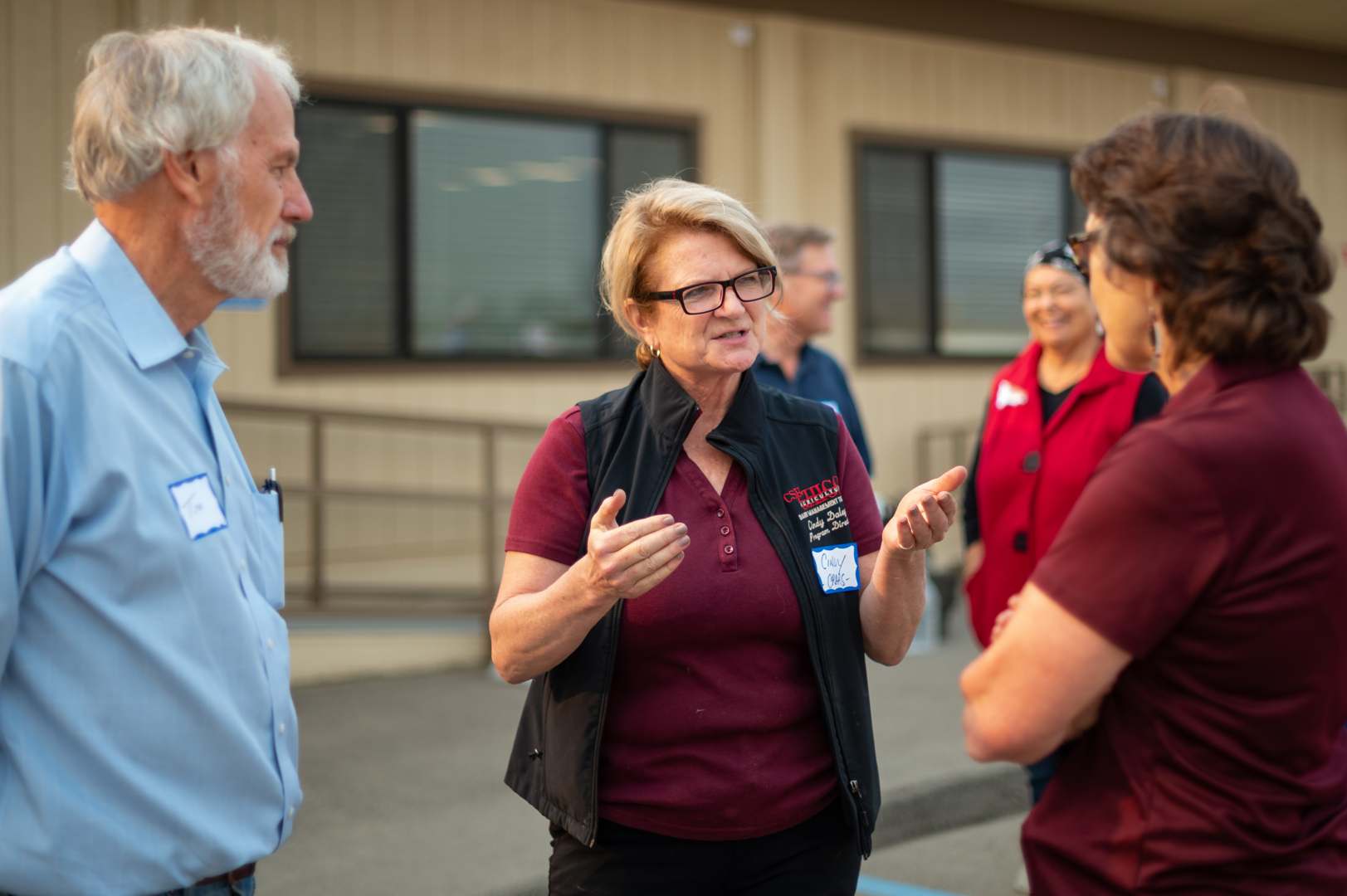Seeding the Future: Center for Regenerative Agriculture Receives $1 Million Gift

Constantin Raether (center) works in the RAD Lab and Soil Preparation Area as the Center for Regenerative Agriculture & Resilient Systems (CRAR) hosts a Regenerative Agriculture Farm Tour & Field Day, visiting demonstration sites at the University Farm on Friday, August 20, 2021 in Chico, Calif. (Jason Halley/University Photographer/CSU, Chico)
When Bruce Burnworth wasn’t competing in wrestling or track and field or playing the clarinet in the Ygnacio Valley High School marching band, he was thinking about things bigger than himself.
“I asked myself, ‘What do I want to do with my life?’” he recalled. “I wanted to make the world a better place and to help people—so I thought, ‘How do I do that?’”
Those early ideals translated into a successful 40-year civil engineering career, where Burnworth dedicated himself to improving infrastructure for water, wastewater, and humans. Today, as Chief Empowerment Officer at Healthy Soil Biomes, Charitable LLC—a not-for-proft company with a mission to accelerate the world’s transition to sustainable agriculture—Burnworth tackles some of our planet’s most important current and looming crises, including climate change, food scarcity, and agricultural water usage.
When he discovered an ally in Chico State’s Center for Regenerative Agriculture and Resilient Systems (CRARS), he accepted an invitation from CRARS Director Cindy Daley to tour the University Farm and learn more about its work. What he saw left him inspired.
The University’s firm commitment to sustainable and regenerative farming practices was expressed at all levels, he said, from students working on research projects to faculty teaching the concepts in classes to President Gayle Hutchinson.
Burnworth was so moved by the dedication that he donated $1 million to CRARS—the largest financial gift the Center had received at that time. Daley said Burnworth’s donation will enhance the number of undergraduates and graduate students CRARS can support through its applied research program.
“Creating these types of extracurricular experiences for our students in climate-beneficial practices will enhance their educational experience, broaden their view of the world, and provide the agricultural industry with a skilled labor force trained to address the really big issues of our time,” she said.
Collaborating together, Burnworth believes he and Chico State are poised to make strides in helping teach the world about regenerative agriculture practices—and he sees teamwork as a vital component to accomplishing his goal.

“It takes a world to save the world,” he said. “All of these ideas are great, but they don’t spread to the people unless we have an alliance of people helping to spread them.”
Burnworth’s philanthropy is making good on his teenage determination to make a difference. While in high school, Burnworth took stock of his strengths, skills, and interests—math and problem-solving—and chose engineering as an educational path. After earning a civil engineering degree from Cal Poly San Luis Obispo in 1977, he followed his passion to help improve the lives of his communities.
Burnworth first became involved in transportation modeling, then worked on traffic engineering in Santa Barbara, which soon broadened to work on airports, dams, parking structures, water, and wastewater. From managing a $200 million project to bring water to San Luis Obispo and Santa Barbara Counties to spearheading a regional sewer project in Placer County to leading a $200 million sewage improvement project in Redwood City, Burnworth’s work took him all around California where he glimpsed opportunities to improve the quality of life for the state’s residents.
“One at a time, in small ways, I started making communities better,” he said. “That was my pathway.”
In early 2021, he took a strong interest in sustainable agriculture practices. Using earnings from a wise investment in Tesla, Burnworth founded Healthy Soil Biomes in February 2021. Once a coupon-clipping engineer who searched for the best shopping deals, Burnworth began by searching for small agricultural businesses decimated by the global pandemic.
“During COVID, very small businesses seemed to be falling through the cracks and not getting the help they needed,” he said. “I found a few farmers that needed help.”
Burnworth soon discovered the sustainability work of David Johnson, one of CRARS’ co-founders. Intrigued by Johnson’s research, Burnworth met Center co-founders Tim LaSalle and Daley and realized CRARS’ and Healthy Soil Biomes’ regenerative agriculture missions and visions dovetailed—each is focused on building a more robust soil microbiome through enhanced carbon accrual in soil.

“It was very clear that Chico State was set up and focused on making this happen and spreading it worldwide, which was consistent with what I wanted to do,” he said.
He didn’t want Chico State to face the limitations other higher education facilities face in such endeavors, as corporate funding imposes restrictions on what kinds of studies they can do. With a gift to CRARS, Burnworth hopes the University will have the funds to explore any and all avenues of relevant research to promote a healthy, living soil, and optimal carbon accrual in soil worldwide.
Hutchinson said Burnworth’s philanthropy supports University priorities of research and sustainability, while also helping CRARS continue its cutting-edge agricultural practices.
“Almost immediately, Bruce’s generosity will give CRARS additional resources to promote regenerative farming practices, restore soil resiliency, and tackle the challenge of water insecurity head-on,” Hutchinson said. “His financial support of the Center sets a precedent that we sincerely hope others will follow.”
Burnworth sees this partnership as a way to seed the many benefits of regenerative agriculture.
“The food farmers grow will be healthier and people eating the food will be healthier, and the carbon dioxide is getting removed from the air and getting put back in the ground, which helps crops grow, while also reducing the climate change issues by reducing the concentrations of carbon dioxide in the air,” he said. “Along with that, you’re creating better soil which will capture more water and retain that water runoff and you’ll have less pollution.”
Burnworth is thinking globally. His big dream is to secure the Carbon Capture XPrize, the Elon Musk-funded $100 million prize purse awarded to teams worldwide fighting climate change, to make an even bigger impact.
“I have a line of sight for how we can solve climate change, food scarcity, farm economics, and world peace, as well as how I can grow my investments to $1 billion to fund this,” he said. “I would not feel good about myself if I did not try my best to accomplish these huge goals.”


